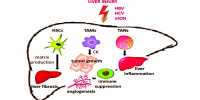With several significant debates occurring in recent years, finding a solution for Alzheimer’s disease is turning into a more difficult, competitive endeavor.
In July 2022, Science magazine reported that a significant 2006 study, which identified a subtype of a brain protein called beta-amyloid as the cause of Alzheimer’s disease and was published in the esteemed journal Nature, may have been based on faked data.
Even though there was insufficient and conflicting evidence to support the use of aducanumab as an Alzheimer’s treatment, the U.S. Food, and Drug Administration approved it as a treatment in June 2021. Despite the opposing views of certain medical professionals, aducanumab should have been allowed.
Why are scientists still struggling to find a solution for what is undoubtedly one of the most significant diseases facing humanity when millions of people require effective treatment?
The beta-amyloid rut being broken: Researchers have been concentrating on developing novel Alzheimer’s medicines by halting the development of clumps of the mystery protein beta-amyloid, which cause brain damage. In fact, it could be argued that by focusing almost solely on this strategy and frequently ignoring or undervaluing alternative hypotheses, we scientists have fallen into a bit of an intellectual rut.
Unfortunately, this commitment to researching aberrant protein clumping has not resulted in an effective medication or treatment. Brain science is now placing a high focus on the need for a new, “out-of-the-cluster,” way of thinking about Alzheimer’s disease.
A new theory on Alzheimer’s disease is being developed in my lab at the Krembil Brain Institute, a member of the University Health Network in Toronto. After 30 years of research, we no longer consider Alzheimer’s to be predominantly a brain disorder. Instead, we think that the main cause of Alzheimer’s is a problem with the immunological system in the brain.
Every organ in the body has an immune system, which is made up of cells and molecules that cooperate to heal wounds and ward off invaders from outside the body. The immune system assists in repairing the tissues harmed when a person trips and falls. The immune system aids in the defense against microbial invaders when a person has a viral or bacterial infection.
The brain uses the same mechanisms. The immune system of the brain mobilizes to aid in brain regeneration after head trauma. The immune system is ready to intervene when bacteria are found in the brain.
As an autoimmune condition, Alzheimer’s: We think that beta-amyloid is a naturally occurring chemical that is a component of the immune system of the brain, not an improperly created protein. It’s meant to be there. Beta-amyloid is a major factor in the brain’s all-encompassing immune response when brain damage or germs are present in the brain. This is where the issue starts.
Beta-amyloid is unable to distinguish between invading bacteria and host brain cells due to the striking similarities between the fat molecules that make up both the membranes of bacteria and the membranes of brain cells. As a result, it mistakenly attacks the very brain cells it is meant to be defending.
Due to the inability of our immune system to distinguish between bacteria and brain cells, this results in a persistent, cumulative loss of brain cell function that eventually results in dementia.
Alzheimer’s disease becomes an autoimmune disease when considered as an immune system mistakenly attacking the brain, the very organ it is meant to be safeguarding. Autoantibodies are important in the development of many different autoimmune illnesses, including rheumatoid arthritis, and they can be treated using steroid-based therapy. However, Alzheimer’s disease will not be treated with these treatments.
The brain is an extremely unique and remarkable organ, widely regarded as the universe’s most complex structure. In our Alzheimer’s model, beta-amyloid supports and strengthens our immune system, but regrettably, it also plays a crucial part in the autoimmune process that, in our opinion, may result in the onset of Alzheimer’s.
We are confident that targeting more immune-regulating mechanisms in the brain will result in novel and efficient treatment options for the illness, even though standard medications used to treat autoimmune diseases may not be successful against Alzheimer’s.
Other theories of the disease: The brain is an extremely unique and remarkable organ, widely regarded as the universe’s most complex structure. In our Alzheimer’s model, beta-amyloid supports and strengthens our immune system, but regrettably, it also plays a crucial part in the autoimmune process that, in our opinion, may result in the onset of Alzheimer’s.
We are confident that targeting more immune-regulating mechanisms in the brain will result in novel and efficient treatment options for the illness, even though standard medications used to treat autoimmune diseases may not be successful against Alzheimer’s.
It is encouraging to read fresh perspectives on this venerable illness. There are already more than 50 million dementia sufferers in the world, and someone is diagnosed with the disease every three seconds. Alzheimer’s patients frequently lose the ability to recognize their own children or even their partner of more than 50 years.
The public health epidemic of Alzheimer’s calls for creative solutions and new approaches. We need a better understanding of Alzheimer’s, its causes, and what we can do to treat it and help the people and families who are living with it for the well-being of those with dementia and the socioeconomic impact on our already overburdened healthcare system dealing with the ever-escalating costs and demands of dementia.
















